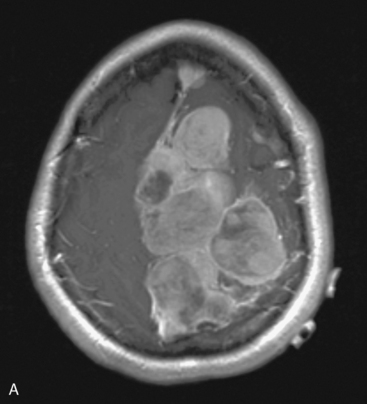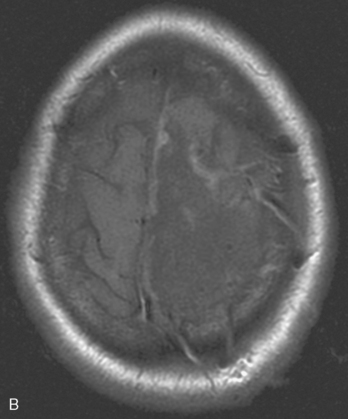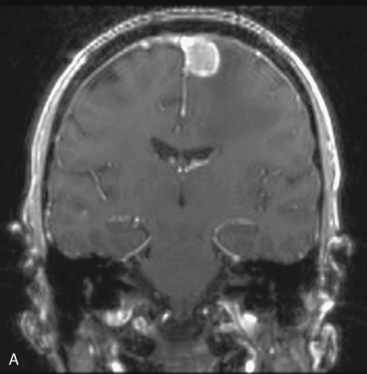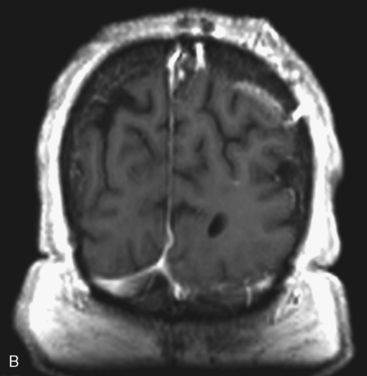CHAPTER 24 Parasagittal and Falx Meningiomas 
INTRODUCTION
Parasagittal meningiomas are interesting because of the technical challenges they present in resection and the changing concepts of their general management. Their usual location is in eloquent cortex, and the increasingly conservative surgical management is paradigmatic of a changing approach to meningiomas in general. Aggressive resection of these tumors means opening the superior sagittal sinus (SSS), removing tumor from within it, and somehow reconstituting the sinus. This has been advocated by some as the preferred surgical goal when the sinus is only partially occluded, with sinus repair and venous grafting when necessary.1–3 In the past, surgical techniques for assessing and safely grafting the sinus have been described.1,4
Recently there has been a different approach to these meningiomas. Resection of the sinus, although leading to lower rate of recurrence, increases the risk of hemorrhage, SSS thrombosis, or venous infarction leading to brain edema and neurologic deterioration. This approach has therefore been modified in recent years, with increasing use of radiosurgery as adjunctive treatment for residual tumors after resection of most of the meningioma.5 We have recently evaluated patients who underwent parasagittal meningioma resection at our institution. Our general approach to these tumors was to resect all tumor and dura involved outside the SSS, and closely follow the residual tumor in the sinus. Tumor progression was treated with radiosurgery.
SURGICAL TECHNIQUES
Positioning
Our approach and positioning are chosen based on the segment of the SSS involved. The general concept is to have eloquent cortex fall away from the tumor by gravity. Patients with tumors involving the anterior third of the SSS are therefore positioned supine with the head flexed. Patients with tumors involving the middle third are positioned with the head turned to the side of the tumor so that gravity causes the brain to fall away from the tumor6 (Fig. 24-1). This usually eliminates the need for brain retraction. Patients with tumors involving the posterior third are positioned prone so that the motor cortex falls away by gravity.
Procedure
The veins associated with these tumors must be preserved at all costs.7,8 The safe surgery of parasagittal meningiomas is surgery of the veins that are associated with them. We undermine veins or gently dissect them off the tumor surface as we are debulking the tumor.
We begin tumor resection by internally debulking using Cavitron or loop cautery, doing our best to avoid retraction on the brain. We then separate the tumor from the brain circumferentially. Tumor invading the SSS is cauterized on the wall of the SSS. If the tumor is just in the wall of the sinus it is removed and the sinus is sutured as the tumor is removed; however, we do not try to reconstruct the sinus with a vein or other graft. Figure 24-2 shows an example of a large parasagittal meningioma removed using these techniques.











